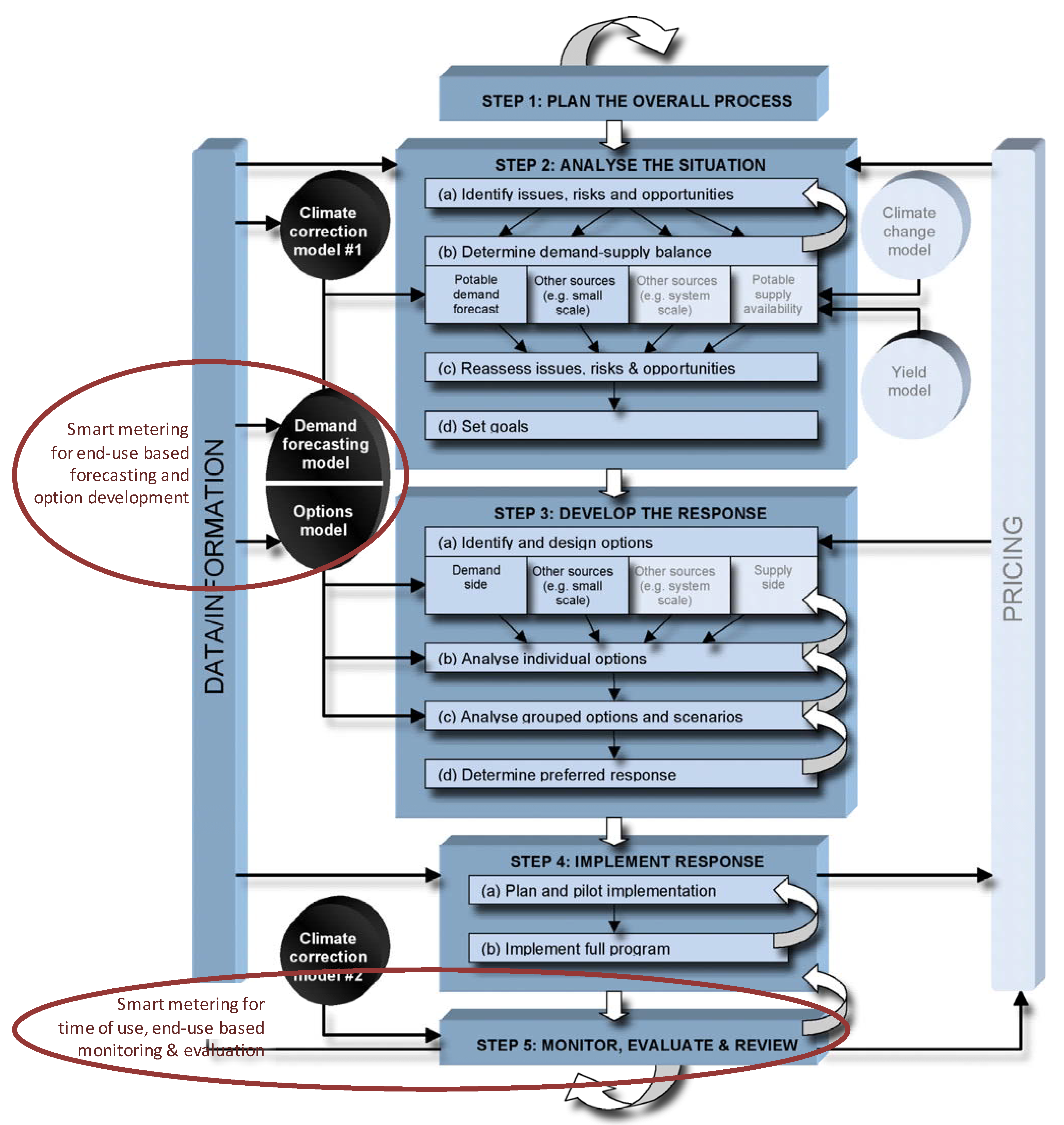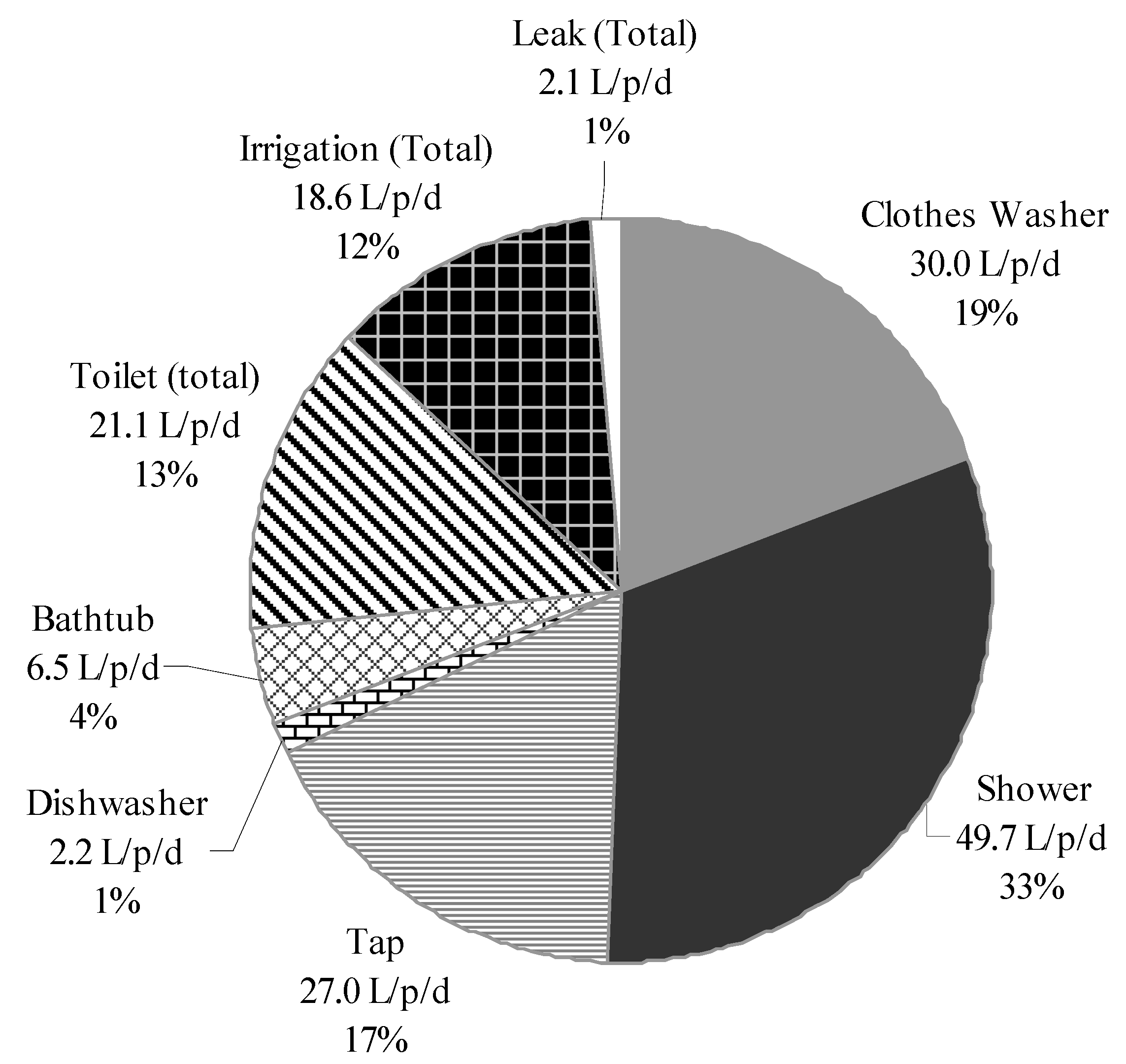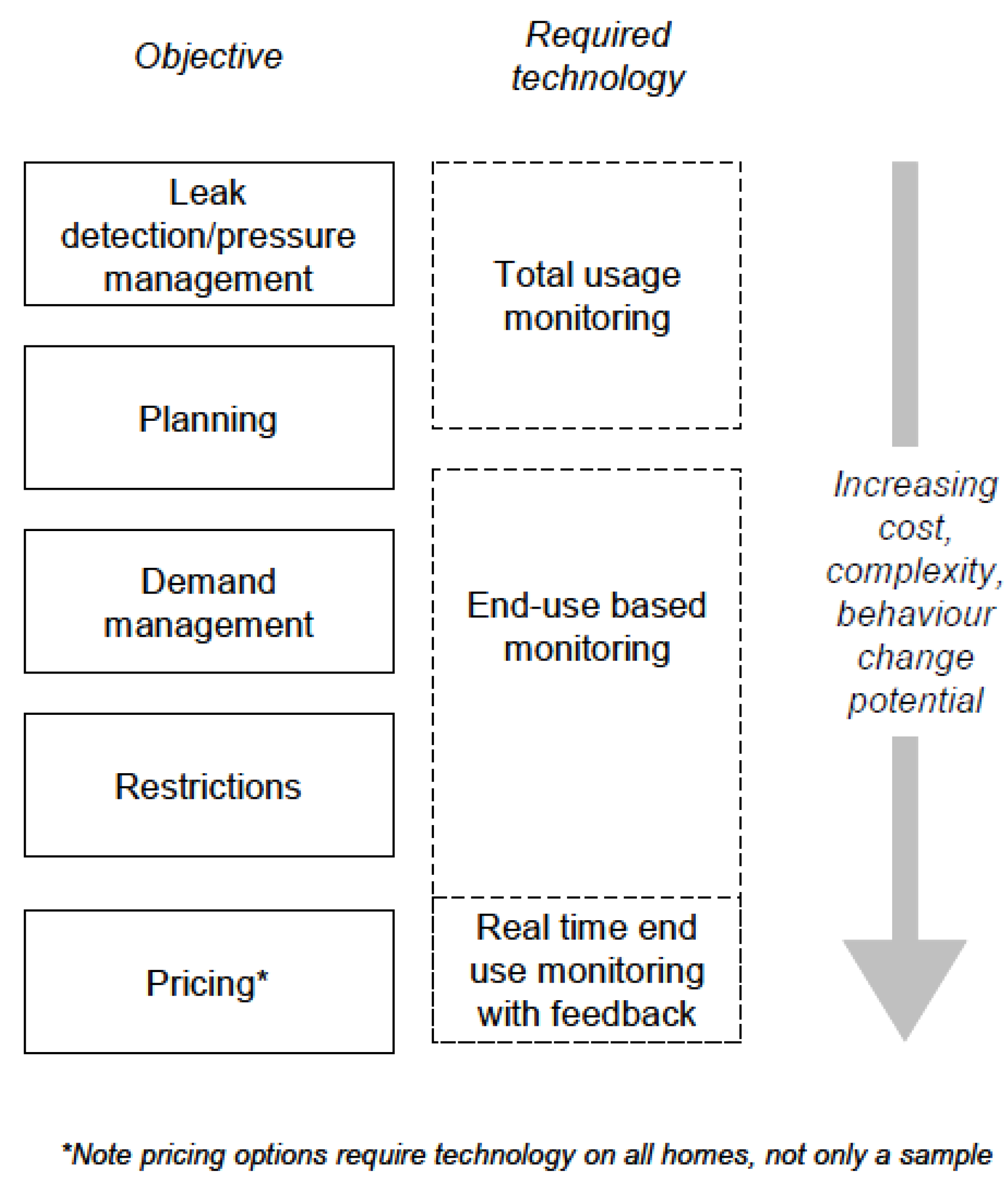Smart Metering and Water End-Use Data: Conservation Benefits and Privacy Risks
Abstract
:1. Introduction
2. Role of Smart Metering and Water End-Use Data for Integrated Resources Planning
| IRP Stage | Benefit of end-use resolution | Benefit of near real-time data |
|---|---|---|
|
|
|
|
|
|
|
|
|
|
|
|
|
|
|



3. Reconciling Potential Conservation Benefits and Privacy Risks
4. Conclusion
References
- Fane, S.A.; Patterson, J.J. Urban water planning in the face of climate change. Water:J. Aust. Water Assoc. 2009, 36, 84–89. [Google Scholar]
- Giurco, D.; Bossilkov, A.; Patterson, J.; Kazaglis, A. Developing industrial water reuse synergies in Port Melbourne: Cost-effectiveness, barriers and opportunities. J.Clean. Prod. 2010. [Google Scholar] [CrossRef]
- Stewart, R.A.; Willis, R.; Giurco, D.; Panuwatwanich, K.; Capati, G. Web-based knowledge management system: linking smart metering to the future of urban water planning. Aust. Plan. 2010, 47, 66–74. [Google Scholar] [CrossRef]
- Turner, A.; Willets, J.; Fane, S.; Giurco, D.; Kazaglis, A.; White, S. Guide to Demand Management; Water Services Association of Australia: Sydney, Australia, 2008. [Google Scholar]
- White, S.; Fane, S.; Giurco, D.; Turner, A. Putting the economics in its place: decision making in an uncertain environment. In Deliberative Ecological Economics; Zografos, C., Howarth, R., Eds.; Oxford University Press: New Dehli, India, 2006; pp. 80–106. [Google Scholar]
- Willis, R.; Stewart, R.; Panuwatwanich, K.; Capati, B.; Giurco, D. Gold Coast domestic water end use study. Water: J. Aust. Water Assoc. 2009, 36, 91–97. [Google Scholar]
- Neenan, B.; Hemphill, R.C. Societal Benefits of Smart Metering Investments. Electricity J. 2008, 21, 32–45. [Google Scholar] [CrossRef]
- Giurco, D.; Carrard, N.; Inman, M. Water End-Use Measurement: A Guide to Study Design, Sampling and Smart Metering Technology; Verlag Dr Muller: Saarbrücken, Germany, 2009. [Google Scholar]
- Shackel, B. Human-computer interaction—Whence and whither? Interact. Comput. 2009, 21, 353–366. [Google Scholar] [CrossRef]
- Syme, G.; Nancarrow, B.; Seligman, C. The evaluation of information campaigns to promote voluntary household water conservation. Evaluation Rev. 2000, 24, 539. [Google Scholar] [CrossRef]
- Jorgensen, B.; Graymore, M.; O'Toole, K. Household water use behavior: An integrated model. J. Environ. Manage. 2009, 91, 227–236. [Google Scholar] [CrossRef] [PubMed]
- Ajzen, I. The theory of planned behavior. Organ. Behav. Hum. Decision Proc. 1991, 50, 179–211. [Google Scholar] [CrossRef]
- McKenzie-Mohr, D.; Smith, W. Fostering Sustainable Behavior: An Introduction to Community-Based Social Marketing; New Society Publishers: Gabriola Island, BC, Canada, 1999. [Google Scholar]
- Keeney, R.; Raiffa, H. Decisions with Multiple Objectives: Preferences and Value Tradeoffs; Cambridge University Press: Cambridge, UK, 1993. [Google Scholar]
- Abrahamse, W.; Steg, L.; Vlek, C.; Rothengatter, T. The effect of tailored information, goal setting, and tailored feedback on household energy use, energy-related behaviors, and behavioral antecedents. J. Environ. Psychol. 2007, 27, 265–276. [Google Scholar] [CrossRef]
- Fischer, C. Feedback on household electricity consumption: a tool for saving energy? Energ. Efficiency 2008, 1, 79–104. [Google Scholar] [CrossRef]
- Brown, R.; Keath, N.; Wong, T. Urban water management in cities: historical, current and future regimes. Water Sci. Technol. 2009, 59, 847–855. [Google Scholar] [CrossRef] [PubMed]
- Boydell, S.; Giurco, D.; Rickwood, P.; Glazebrook, G.; Zeibots, M.; White, S. Using an integrated assessment model for urban development to respond to climate change in cities. In Energy Efficient Cities: Assessment Tools and Benchmarking Practices; Bose, R., Ed.; The World Bank: Washington, DC, USA, 2010; pp. 65–91. [Google Scholar]
- McIntyre, T.J. Data retention in Ireland: Privacy, policy and proportionality. Comput. Law Secur. Rep. 2008, 24, 326–334. [Google Scholar] [CrossRef]
- Collins, S.-J. Power Bill Pain as Smart Meter Cost Blows Out. The Age 2010.
- Franks, D.; Cohen, T.; McLellan, B.; Brereton, D. Technology Futures Discussion Paper: Technology Assessment and the CSIRO Minerals Downunder National Research Flagship. In Cluster Reasearch Report No. 2.1; Centre for Social Responsibility in Mining Sustainable Minerals Institute, The University of Queensland: Brisbane, Australia, 2010. [Google Scholar]
© 2010 by the authors; licensee MDPI, Basel, Switzerland. This article is an Open Access article distributed under the terms and conditions of the Creative Commons Attribution license (http://creativecommons.org/licenses/by/3.0/).
Share and Cite
Giurco, D.P.; White, S.B.; Stewart, R.A. Smart Metering and Water End-Use Data: Conservation Benefits and Privacy Risks. Water 2010, 2, 461-467. https://doi.org/10.3390/w2030461
Giurco DP, White SB, Stewart RA. Smart Metering and Water End-Use Data: Conservation Benefits and Privacy Risks. Water. 2010; 2(3):461-467. https://doi.org/10.3390/w2030461
Chicago/Turabian StyleGiurco, Damien P., Stuart B. White, and Rodney A. Stewart. 2010. "Smart Metering and Water End-Use Data: Conservation Benefits and Privacy Risks" Water 2, no. 3: 461-467. https://doi.org/10.3390/w2030461







